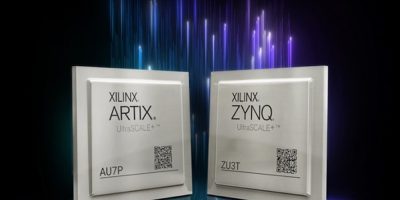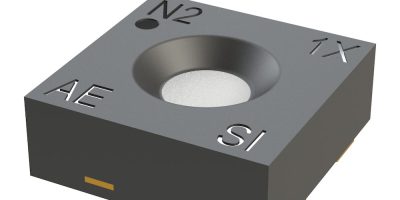Building on the Zynq UltraScale+ MPSoCs and Artix UltraScale+ FPGAs, AMD has introduced the AU7P FPGA and ZU3T MPSoC. Both are based on the 16nm FinFET process for low power, high performance per Watt and small form factor applications. The SoCs are small, low cost, and low power entry points to the programmable logic transceiver-based UltraScale+ family, said AMD, with improved features such as high IO-to-logic density, UltraRAM and DSP.
The Artix UltraScale+ AU7P FPGA is claimed to be the lowest density, lowest power, and most cost-optimised 12.5Gbits per second transceiver-based FPGA in the Artix UltraScale+ portfolio. It offers high I/O-to-logic ratio and high memory-to-logic ratio for storing and buffering large amounts of data for processing and compute applications.
They provide up to 50 per cent lower static power, 20 per cent more I/O-to-logic ratio and twice as many 3.3V HDIO compared to the AU10P device, confirmed AMD.
The innovative InFO packaging with dimensions of 8.5 x 10.5mm means that the AU7P is suitable for applications requiring high compute density in a small footprint. InFO packaging’s thermal and power distribution contributes to compact, power-sensitive applications such as medical imaging, machine vision, professional cameras/monitors, and automotive radar/lidar.
The ZU3T MPSoC device is the smallest device added to the Zynq UltraScale+ family with 12.5Gbits per second GTH transceivers for cost-optimised applications. The GTH transceivers are highly configurable and tightly integrated with programmable logic resources of the UltraScale+ architecture. It also has five times the transceiver bandwidth compared to the ZU3 device for critical networking applications, vision and video processing, and secured connectivity.
It also has a higher DSP slice count compared to the ZU3 for better signal processing compute, said AMD. The additional UltraRAM adds 2.5 times the embedded memory for embedded and video processing applications.
The ZU3T contains a 64-bit processor combining real-time control with soft and hard engines for graphics processing. An Arm-based CPU sub-system is integrated for advanced analytics and there is on-chip programmable logic for task acceleration, making the MPSoC suitable for camera monitors, medical imaging and automotive infotainment systems.
The AU7P device is expected to begin shipping pre-production and production silicon in the second half of 2023.The ZU3T device is expected to begin shipping pre-production silicon to early access customers in the first half of 2023, with production silicon expected in the second half of 2023.
Both will be available in automotive (XA) grade, qualified according to AEC-Q100 test specifications with full ISO26262 ASIL-C level certification.







